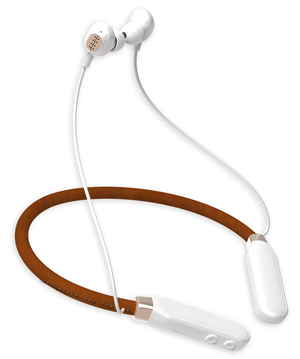Qualcomm's CES 2017 announcements
At CES 2017, Qualcomm has made various announcements on its latest Snapdragon processor as well as developments in its IoT, 5G and Automotive offerings. These announcements are summarised below, alternatively for those lucky enough to be in Las Vegas you can visit Qualcomm at their stand at CES in North Hall, booth #5609.
Qualcomm Snapdragon 835 mobile platform to power next-gen immersive experiences
Qualcomm has announced its newest premium-tier mobile platform, the Qualcomm Snapdragon 835 processor with X16 LTE. The Snapdragon 835 processor is the first mobile platform to be commercially manufactured using the 10nm FinFET process node, allowing for high power efficiency. The Snapdragon 835 is designed to support next-gen entertainment experiences and connected cloud services for premium-tier consumer and enterprise devices, including smartphones, VR/AR head-mounted displays, IP cameras, tablets, mobile PCs and other devices running a variety of OS’s including Android and Windows 10 with support for legacy Win32 apps. The key improvements available are: battery life, immersion, capture, connectivity and machine learning. Find out more here.
Enhancements to the Qualcomm network announced with IoT connectivity platform and expanded WiFi SON
Two important elements of the Qualcomm Network have been announced, designed to deliver simple, consistent and seamless connected experiences. As network complexity and expectations skyrocket at the hands of insatiable consumer demand, Qualcomm is introducing a suite of features, for deployment across IoT devices, IoT hubs, and network gateways that centralise, and manage the complex and diverse connectivity technologies and ecosystems – the Qualcomm Network IoT Connectivity Platform. Additionally, the company is further broadening the capabilities of its WiFi Self Organising Network (SON) solution to help ensure the best managed network possible. Find out more here.
TrueWireless Stereo Technology drives innovation in Bluetooth stereo headset and hearables categories
After years of research, Qualcomm has announced its TrueWireless Stereo Headset Reference Design. Qualcomm has developed the TrueWireless technology to meet growing demand in the headset and hearables market for much smaller form factor, truly wireless devices. Qualcomm TrueWireless Stereo technology eliminates the need for wires entirely – not only between the media source and stereo headset, but also between left and right earbuds. Without Qualcomm TrueWireless, wireless Bluetooth headsets and hearables would be connected to the audio source wirelessly, but would still need a wired connection between the left and right earbuds. The Design's benefits include its low cost, long listening time per battery charge and robust antenna technology. Find out more here.

Active Noise Cancelling technology brought into small earbuds and headphones
Active Noise Cancelling (ANC) technology has been introduced to the CSR8675 product platform, which the company claims makes it the world’s first Bluetooth audio System-on-Chip (SoC) to integrate such an advanced audio solution. The new feature reduces the complexity and cost of adding active noise cancelling to headphones by eliminating the need for a separate ANC chip, helping manufacturers quickly deliver premium audio experiences in much smaller form factor designs. Find out more here.
Augmented Reality smartglasses powered by the Snapdragon 835 processor
Qualcomm and ODG (Osterhout Design Group), have announced that R-8 and R-9 will be the first announced devices powered by the Qualcomm Snapdragon 835 processor, which uses 10nm FinFET process technology to enable a new generation of premium consumer devices in small form factors with breakthrough performance and high power efficiency. R-8 is ODG’s first consumer mobile AR/VR smartglasses, targeted at the consumer early adopter, and R-9 is for a wide variety of wide Field-Of-View (FOV) experiences from light enterprise, to prosumer media consumption, and as a development platform for sophisticated mobile AR/VR and smartglasses applications. Find out more here.
Verizon and Qualcomm unveil next chapter of growth for the Internet of Things
Verizon and Qualcomm are to accelerate innovation in the IoT with the introduction of ThingSpace-ready modules from Quectel and Telit using Qualcomm’s MDM9206 Category M1 (Cat-M1) LTE Modem. To further facilitate the creation of IoT solutions using Verizon’s ThingSpace platform on the MDM9206 LTE modem, Verizon is making available a development kit. The modules and development kit are expected to be available in early 2017. Verizon’s ThingSpace client has been pre-integrated and tested on the MDM9206 LTE modem and is designed to allow manufacturers to easily and seamlessly develop, as well as manage IoT devices for quicker time-to-commercialisation. Using the integrated application processor in the MDM9206 LTE modem, OEMs can develop cost-effective and small-footprint devices and incorporate the benefits of LTE connectivity into many new IoT applications. Find out more here.
Qualcomm, Ericsson and AT&T announce collaboration on 5G New Radio trials intended to accelerate wide-scale 5G deployments
Qualcomm, Ericsson, and AT&T have announced plans to conduct interoperability testing and over-the-air field trials based on 5G New Radio (NR) specifications being developed by 3GPP, which will form the basis of the global standards. The trials intend to help move the mobile ecosystem to faster 5G deployment based on standards-compliant 5G NR infrastructure and devices once 3GPP completes the first release of the official specifications, which is expected as part of Release 15. Find out more here.
Automotive solutions power next-gen infotainment for Volkswagen Vehicles
Qualcomm chipsets have been integrated in the next-gen of Volkswagen AG vehicles. These chipsets include the Qualcomm Snapdragon 820A processor for advanced infotainment systems, as well as the Snapdragon X12 and X5 LTE modems, for connected car and telematics systems. Committed to delivering rich user experiences and enhanced safety features for automobiles, Qualcomm is working closely with Volkswagen to develop and produce one of the highest performing infotainment and telematics systems in the automotive industry. Volkswagen vehicles featuring the Snapdragon 820A processor are expected to be available in 2019, while vehicles utilising Snapdragon X12 and X5 LTE modems are expected to be available in 2018. Find out more here.
Gigabit Class LTE for next-generation connected vehicles
A new variant of Qualcomm's connected car reference platform has been introduced, using the Gigabit Class Qualcomm Snapdragon X16 LTE modem to help car manufacturers deliver the high-speed, high-quality and reliable connectivity required for advanced telematics and connected vehicle services – supporting peak download speeds up to 1Gbps. Building on the Company’s leadership supplying 3G/4G LTE modems for automotive, the reference platform is designed to allow carmakers to quickly and easily integrate the broad range of additional wireless and networking technologies required in today’s vehicles, including WiFi, Bluetooth, Bluetooth Low Energy and Global Navigation Satellite System (GNSS), with optional support for DSRC and Cellular-V2X. The platform also includes a module reference design for the Snapdragon X16 LTE modem to help automotive suppliers accelerate development and improve time-to-commercialisation. Find out more here.
Consortium of automotive and telecom companies host 3GPP release 14 Cellular-V2X technology field trial in Germany
AUDI, Ericsson, Qualcomm, SWARCO Traffic Systems and the University of Kaiserslautern have announced the formation of Connected Vehicle to Everything of Tomorrow (ConVeX) – a consortium to carry out the first announced Cellular-V2X (C-V2X) trial based upon the 3rd Generation Partnership Project’s (3GPP) Release 14, which includes Vehicle-to-Everything (V2X) communication. The trial efforts are expected to focus on Vehicle-to-Vehicle (V2V), Vehicle-to-Infrastructure (V2I) and Vehicle-to-Pedestrian (V2P) direct communication, as well as Vehicle-to-Network (V2N) wide area communications. ConVeX will be executed by a cross-industry consortium that brings diverse expertise to the trial. ConVeX will be co-funded by the participating organisations and the German Federal Ministry of Transportation and Digital Infrastructure (BMVI) within the scope of the 'Automated and Connected Driving on Digital Test Fields in Germany' funding guidelines. Find out more here.
Collaboration integrates new wearable devices with wellness programme

UnitedHealthcare and Qualcomm have announced enhancements and the expansion of UnitedHealthcare Motion, a wellness programme that provides employees with activity trackers at no additional charge and enables them to earn up to $1,500 per year by meeting certain goals for the number of daily steps. Find out more here.










